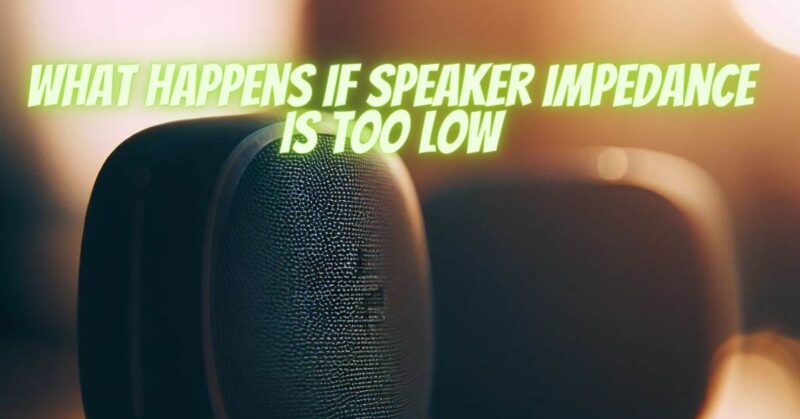Speaker impedance is the measure of how much electrical resistance a speaker has. It is measured in ohms, and most speakers are rated at 4, 6, or 8 ohms.
When the impedance of a speaker is too low, it means that the speaker is drawing more current from the amplifier than the amplifier is designed to handle. This can cause a number of problems, including:
- Distortion: When the amplifier is forced to work harder than it is designed to, it can produce distortion in the sound. This is because the amplifier is not able to accurately reproduce the original signal.
- Overheating: The amplifier can overheat if it is forced to draw too much current. This can damage the amplifier and even cause it to fail.
- Speaker damage: The speaker itself can also be damaged if it is connected to an amplifier with too low of an impedance. This is because the speaker is not designed to handle the high current draw.
In some cases, a speaker with too low of an impedance can even damage the amplifier’s output transistors or IC. This is because the transistors or ICs are not designed to handle the high current draw.
To avoid these problems, it is important to match the impedance of the speakers to the impedance of the amplifier. The amplifier’s manual will typically specify the minimum and maximum impedance that the amplifier can handle.
If you are unsure about the impedance of your speakers or amplifier, it is always best to consult with a qualified audio technician.
Here are some additional things to keep in mind about speaker impedance:
- Low-impedance speakers (4 ohms) are typically more efficient than high-impedance speakers (8 ohms). This means that they will require less power from the amplifier to produce the same level of sound.
- However, low-impedance speakers can also be more demanding on the amplifier. This is because they draw more current from the amplifier.
- It is important to make sure that the amplifier is capable of driving the speakers at their rated impedance. If the amplifier is not powerful enough, it will not be able to produce the desired sound level.
- If you are connecting multiple speakers to the same amplifier, it is important to make sure that the total impedance of the speakers does not exceed the amplifier’s minimum impedance rating.
By following these tips, you can help to ensure that your speakers and amplifier are protected from damage caused by a mismatch in impedance.


